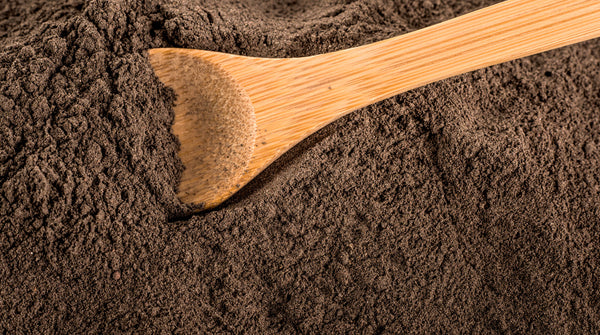Charcoal and I met when I was a third-year medical student, helping treat a young, female overdose patient in the emergency department. I used it countless times during my practice as an ER doc, and saw it save more than a few lives. In fact, coming in for Sunday morning shifts, we could always identify the patients who had been brought in intoxicated and unconscious by the telltale black ring around their lips—they had all been treated with activated charcoal in an effort to prevent drugs from causing dangerous toxicity. So, yes, it works.
WHAT IS CHARCOAL?
Charcoal is made from wood or coconut shells by heating them at VERY high temperatures (800-1200 degrees) with very low oxygen concentrations. This slow process removes methane, hydrogen, and tar from the wood, and reduces the weight of the wood by 75%, leaving behind a concentrated, black substance made mostly of carbon. At this point, charcoal can be used as fuel, and burns cleaner and hotter than wood. But it's the "activation" step that makes charcoal become a superhero, capable of saving lives.

HOW DOES CHARCOAL BECOME ACTIVATED?
Activation may be done with chemicals or with steam—we use the steam-activated variety. The charcoal is steamed at very high temperatures, opening up the carbon structure and further eliminating the non-carbon elements. In the end, what remains is an incredibly porous version of carbon, with tons of open spaces with which to bind other stuff.
HOW DOES ACTIVATED CHARCOAL DETOXIFY?
Here is the part that should melt your brain: One tablespoon of activated charcoal powder has the same surface areas as two football fields. Read it again. Tell the person next to you. Because it's that amazing. TWO FOOTBALL FIELDS!!!
This is precisely why we use it in the emergency room. In the case of an overdose or accidental ingestion, if the toxin is still in the stomach or upper intestine, that means it has not yet been absorbed by the body. Activated charcoal is administered through a tube going from the mouth or nose into the stomach, where it binds up the toxin, grabbing onto it like a bargain shopper on Black Friday. Activated charcoal is not absorbed by the body, so it just passes through, carrying the toxin with it. (It doesn't work for every toxin, and should only be administered by medical personnel.)
This incredible binding capability is why activated charcoal is good at so many other things. It's used for water filtration, decaffeination, air filtration, environmental contamination cleanup, and the purification of vodka and whiskey.
And, recently, it has become the ultimate, clean beauty detox ingredient!
ACTIVATED CHARCOAL IN SKINCARE
Because of its unparalleled ability to bind impurities and unwanted toxins, activated charcoal is brilliant for skincare. Used in proper proportions, it can pull pollutants and contaminants from the skin, and rinse them down the drain. But it can also bind good stuff, like vitamins and minerals, so you must use it sparingly, and in combination with the right replenishing ingredients. We use activated bamboo charcoal in our popular Detox Exfoliating Mask (pictured above) with organic manuka honey and raw cacao to provide nourishment along with the purification. We also recommend using this mask only once a week. We use activated charcoal in our stunning Oh So Detox soap, where it works with organic olive oil and shea butter to cleanse and soften the skin. Oh So Detox has no essential oils, so it is well-suited for those with very sensitive skin or noses, as well as people who struggle with eczema or psoriasis. Contrary to popular belief, there's no charcoal in our beloved Black Clay Facial Soap, because we think using on your face every day is too much of a good thing.
OTHER USES FOR ACTIVATED CHARCOAL
Activated charcoal works to whiten teeth the same way—just put a dab of your toothpaste on the brush, and then dip it in a bit of activated charcoal powder. It is harmful to the lungs if inhaled, so try not to breathe in any loose powder—mash it into the toothpaste first. It can bind up many of the pigments from coffee, tea, and red wine that stain your teeth over time. Brush with charcoal twice a day for a week and see if you notice any difference. (It's messy as sin and tastes like you faceplanted in a fireplace, but I noticed a difference. Not a dramatic, holy-moly kind of difference, but a definite improvement.) If you're not into the DIY route, Terra & Co makes an oil for oil-pulling and dental floss with charcoal, and I love these Bite toothpaste bits.
So, there you have it. The lowdown on activated charcoal. It's a hot skincare ingredient at the moment, and I hope this helps you understand how and why it works. After using activated charcoal in the ER so many times, and understanding the organic chemistry of how it works, I can tell you that it is definitely a little dose of black magic.
With love and detoxified everything,











